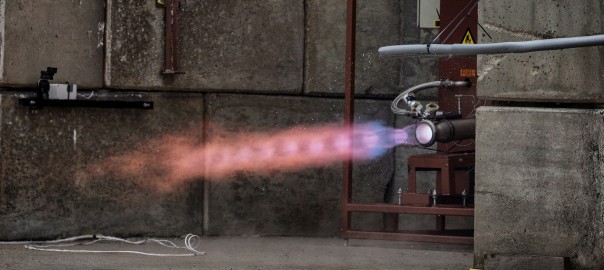The rocket engines will roar again on Refshaleøen!
The test will concentrate on optimizing the operating point of the Nexø II flight engine. This means that we will test a number of different pressure levels, centered around 15 bar, and also vary the O/F ratio (Oxydizer to Fuel ratio). We aim at determining the tank pressures needed to obtain a chamber pressure of 15 bar, and an O/F ratio of 1.3.
Peter Scott has edited the DPR (Dynamic Pressure Regulation) algorithm for this purpose, enabling us to ramp up or ramp down the pressure of one of the tanks during a burn. This active regulation varying the pressure during the burn is a first for us, until now we have aimed at keeping the tank pressure constant during a burn. Varying the pressure during the burn will give us a large number of measured operation points during a single burn. Each measurement period will be about 6 seconds long before the pressure is regulated up or down for the next measurement period. Rather than doing a lot of short burns, this method will require fewer and very long burns. We will thus fill the tanks to the brim, to obtain as many measurements as possible during each burn.
Vi aim at having our equipment installed at the test range and ready for testing at 2 PM. (13.00 UTC). We expect 4 or 5 burns during the afternoon, which should cater for a long and exciting day.
Apart from testing engines, we will also test other equipment. After having worked on a LOX level sensor for a couple of months, Emil is ready to measure the level in the LOX tank. It is our hope that this sensor can be used instead of the method using a load cell to determine the LOX level, as this has proved to be problematic. If the sensor test is successful, we will consider installing it in the LOX tank of the Nexø II rocket.
At previous static tests, refilling the high pressure tanks of the DPR system has been very time consuming. For this test a new system, made by Rune, is ready to replace the old refill procedure. We sincerely hope that the new system will shorten the wait between burns considerably.
The test is open to the public as usual, and you are invited to observe the test from a safe distance. This time several foreign visitors have announced their arrival, among these a possible future sponsor, and also a rocket oganization from Finland.
We hope to see you, free admittance from 1 PM (12.00 UTC).
If you take us up on the invitation, please remember that the test range, when the area was part of a shipyard, was referred to as Siberia, with good reason. So do dress like you are going to the (ant)arctic. We’ll have hot coffee on the pot for you.
If you should be unable to attend, you can watch the test on live stream on the internet. A link to the stream will be published on copsub.com early Saturday.
In addition to testing rocket engines, Copenhagen Suborbitals will also test a scale model of the space capsule that may be the one carrying one of us into space some day. The present model is quite simple, but adequate to get an impression of the descend performance.
The wind tunnel capsule test is sceduled for next Tuesday, at Copenhagen Air Experience. Later in February a water splash down test will take place. More information will be announced on our blog in the near future.



